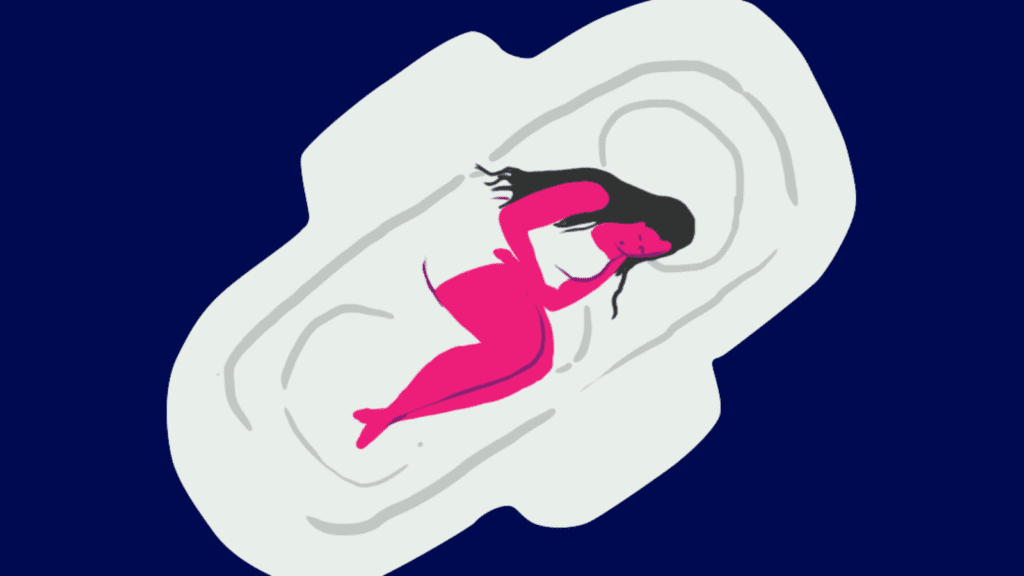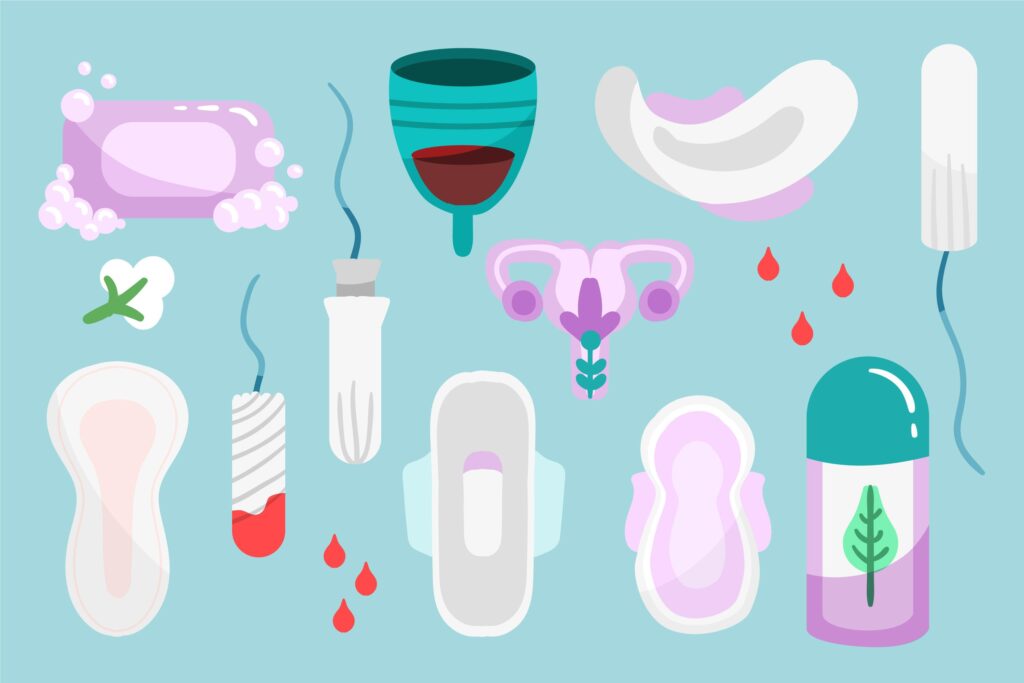Menstruation is a natural process that occurs after 28-35 days duration every month. This process occurs because of the cyclical production of hormones which promotes the growth of a mature follicle that releases an egg which if fertilized results in conception. If the egg is not fertilized, the endometrium sheds and results in menstrual flow.
This is a monthly process that happens to all women. During menstruation adequate hygiene should be maintained. Menstrual health and hygiene are fundamental for the wellbeing of every female. It empowers women to be confident and at the forefront of their daily activities.
According to the World Bank, around 500 million women worldwide lack access to basic menstrual products. An unsatisfactory menstrual hygiene predisposes the body to infections, which is why it is considered very important to follow the general protocol.

Period poverty in Pakistan
Period poverty refers to social or cultural barriers that prevent women to freely access menstrual products. Lack of access to these products affects the physical and emotional tendencies of females and hurdles to their potential of performing their best.
Another important factor that prevents women to attain good menstrual hygiene and access menstrual products is due to the financial constraints and tax on these products which makes it expensive and out of reach for them. Hence the unmet menstrual needs of women is an important issue that must be tactfully handled by the concerned authorities to aid the access of these products to all.
Lack of basic menstrual wellness
Around 80 percent of girls discover about menstruation after getting their first period. This lack of knowledge predisposes them to hesitancy and emotional discomfort. Having the basic knowledge about the process of menstruation and menstrual products allows young girls to be mentally prepared for the time they experience it. It also protects them from social embarrassments.
Menstrual health management (MHM)
To prevent the occurrence of disease and infection the WHO has introduced guidelines that highlight some precautions. Menstrual health management (MHM) focuses on women and adolescent girls to use an absorbable material that can be changed in privacy with the availability of water soap and proper sanitation. Maintain the cleanliness and disposing the used menstrual product wrapped in toilet paper or paper bag in a bin instead of flushing it down the toilet.
Previously cloth was most popularly used by women during menstruation but the use of newer menstrual products like pads, tampons, menstrual cups and period underwear is preferred now. All these products are advised to be changed within 4-8 hours to prevent overflow. The menstrual cups are reusable and are to be washed properly to maintain hygiene.

Important steps to maintain good hygiene
- Use of clean water – Rinsing of the vulva with clean water with the direction being from vulva to the anus. This is important in preventing the bacteria to reach from the anus to the vulva.
- Changing the menstrual products regularly – It is advised to change the menstrual products within 4 to 8 hours to prevent overflow but more importantly to prevent toxic shock syndrome. Toxic shock syndrome is a life-threatening condition which is caused by bacteria entering the body and releasing toxins which are harmful for the body. This is highly associated with the use of tampons in young girls.
- Use of good quality non scented products – Scented products can irritate the skin and lead to rash. Hence, it is better to use good quality products which are not scented.
- Bathing and cleaning – In some regions menstruation is considered impure and dirty. There are many misconceptions and people believe that bathing can have negative effects on health. This is false as there is no data that can show negative effects of bathing on health. However, bathing and maintaining cleanliness is good for health and prevents the development of possible infections.

Types of menstrual products and their availability
There are many types of menstrual products available in the market. The safe menstrual products to maintain good hygiene are sanitary pads, tampons and menstrual cups. The choice of the perfect menstrual product depends on certain factors that vary amongst women. These factors include the level of activity, cost, ease of change and the amount of flow. The most used product is sanitary pads followed by tampons.
Sanitary pads are the most popular amongst menstrual products. These are highly absorbent and made from natural and synthetic fibers majorly cotton. These need to be changed every 6-8 hours to prevent overflow and infection.
Tampons are also commonly used. These are also made from natural and synthetic fibers and are inserted in the vagina. These may be a little difficult and uncomfortable for some women to insert hence pads are superiorly used. Tampons must be changed 4-6 hours to prevent the occurrence of toxic shock syndrome (TTS). This is a rare but life-threatening condition and may present with symptoms like fever, nausea, vomiting, muscle cramps and rashes.
Menstrual cups have recently become popular and in use. These are washable and pocket friendly. Like tampons, a menstrual cup is inserted in the vagina and where they collect menstrual blood. The menstrual cup can be washed and changed till 12 hours which is greater duration than sanitary pads and tampons, but this again depends on the amount of flow.
Other less popular options are menstrual discs and period underwear. Menstrual disc is placed in the vagina at the opening of cervix. The period underwear is made up of poly filaments that absorb the period flow and prevents leakage. It can be washed and reused for 2 years.
Hence, the choice of menstrual product depends on the amount of flow, cost and sustainability.
This article concludes the importance of menstrual hygiene and how it is significant to prevent the occurrence of infectious disease that may be life threatening for women.
Take away points
- Menstruation is a natural process that occurs in all females and normally is at the end of 28–35-day cycle.
- There are some basic needs and requirements that women have during the menstruating phase. These necessities include sanitary menstrual products, clean restrooms, water and soap.
- Menstrual health management (MHM) is a program introduced to educate about these necessities and to spread awareness about menstrual hygiene.
- Period poverty is a problem in Pakistan which hurdles access to menstrual products for women in this country. To overcome this, it is essential to highlight the importance of the lack of these basic needs. It is very important to increase the availability of these products and facilities to ease menstrual hygiene for all.
- Important steps to maintain good hygiene during menstruation are, use of clean water, changing of menstrual products regularly, use of scented products, bathing and cleaning.
- There are various menstrual products that are available like sanitary pads, tampons, menstrual cups and menstrual underwear.














